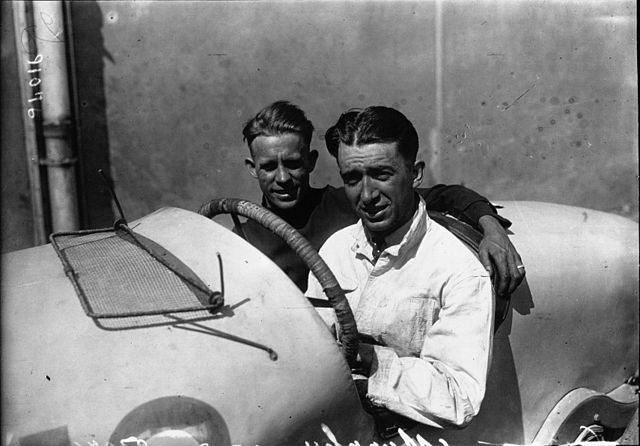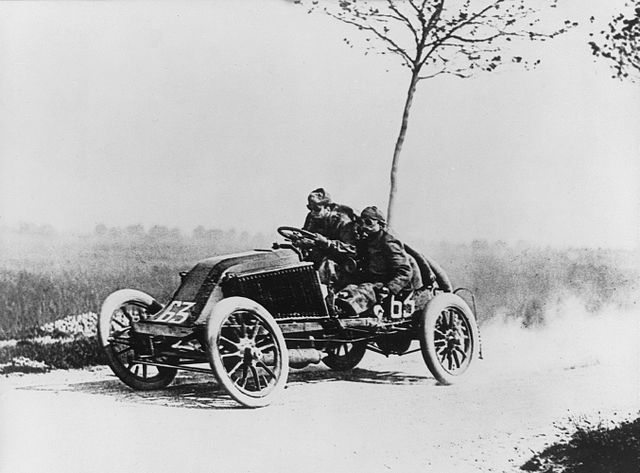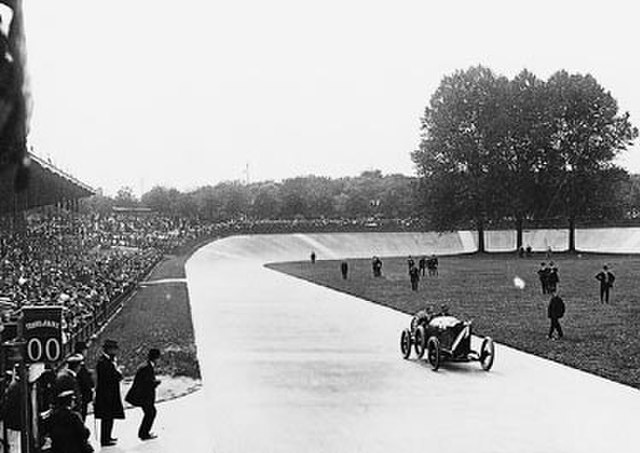The 1921 Grand Prix season saw motor racing in Europe blossom again. The French Grand Prix was held for the first time since 1914, at La Sarthe, Le Mans. and the inaugural Italian Grand Prix was held in Montichiari, near Brescia. The 3-litre formula of the AIACR, already in use at Indianapolis, was adopted by those Grand Prix meaning manufacturers could design on a common formula.
Jimmy Murphy and mechanic Ernie Olsen, winners of the French Grand Prix
Giulio Masetti, Targa Florio winner in his pre-war FIAT
Tommy Milton, in his winning Frontenac
Henry Segrave (Sunbeam #10) & Jimmy Murphy (Duesenberg #12) starting the French GP together
Grand Prix motor racing, a form of motorsport competition, has its roots in organised automobile racing that began in France as early as 1894. It quickly evolved from simple road races from one town to the next, to endurance tests for car and driver. Innovation and the drive of competition soon saw speeds exceeding 100 miles per hour (160 km/h), but because early races took place on open roads, accidents occurred frequently, resulting in deaths both of drivers and of spectators. A common abbreviation used for Grand Prix racing is "GP" or "GP racing".
Marcel Renault during the 1903 Paris Madrid trial.
Georges Boillot winning the 1912 French Grand Prix in Dieppe, France
Grid of Coppa Fiera di Milano 1925







